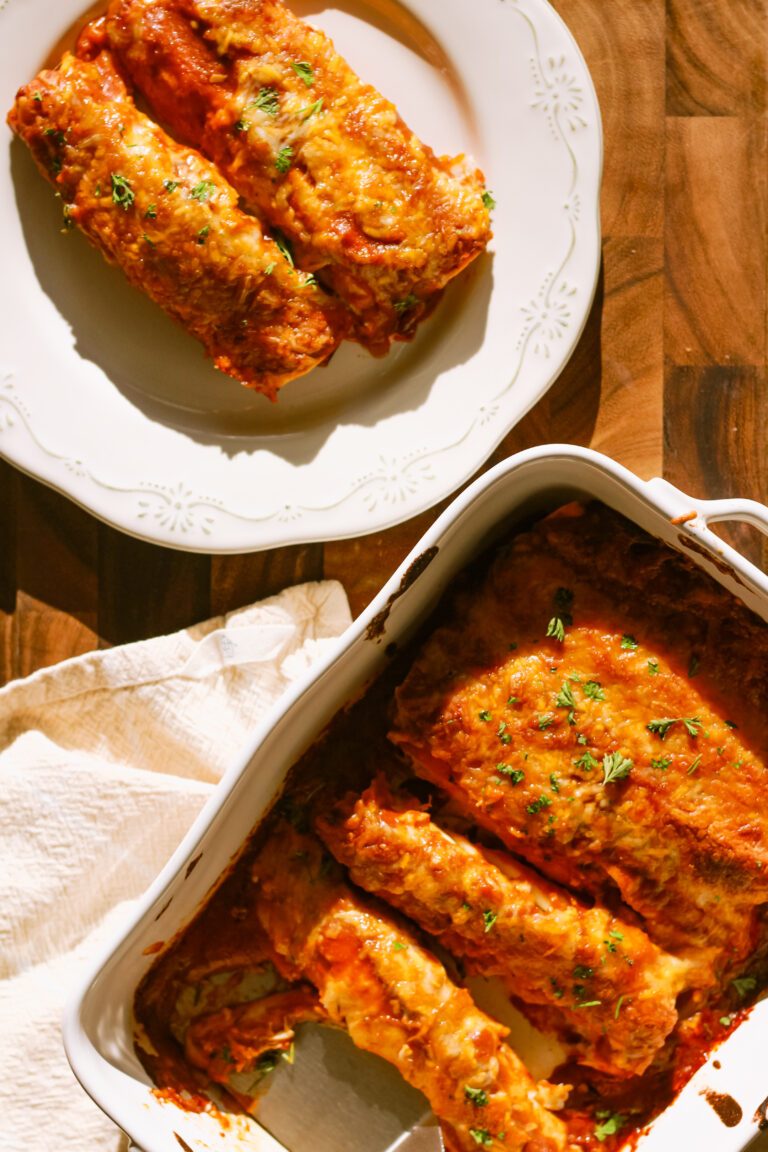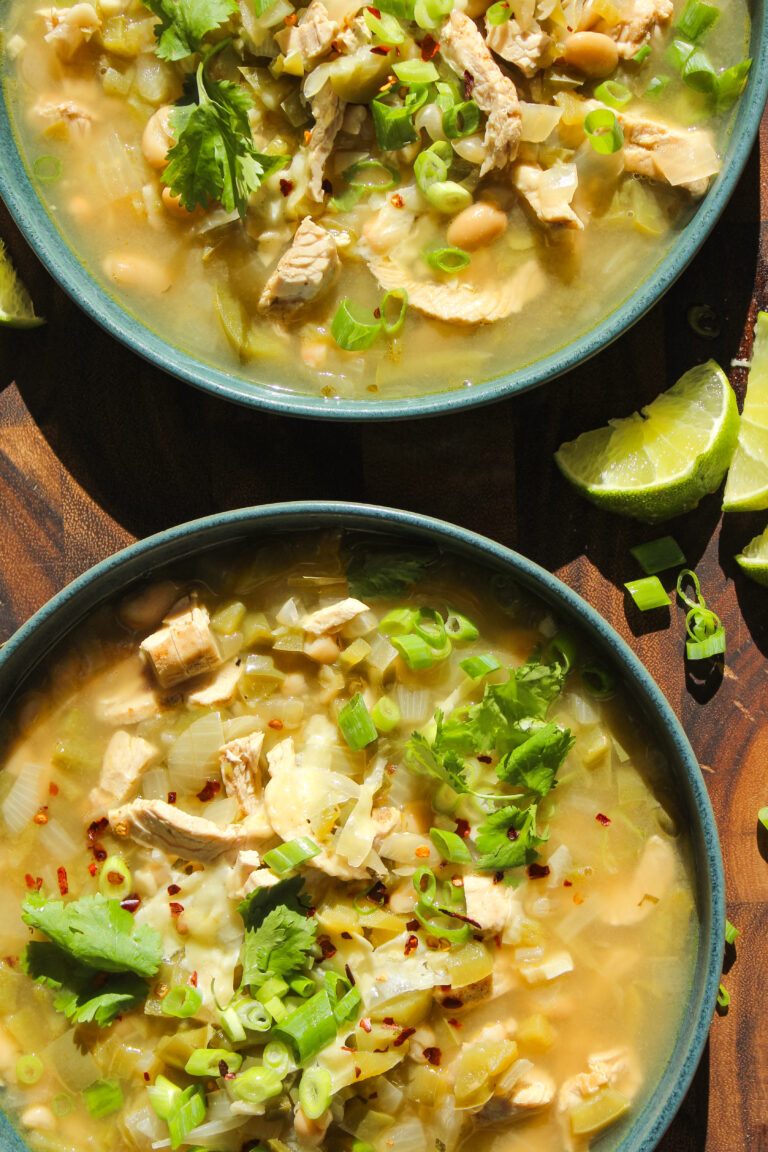This post may contain affiliate links, which means we’ll receive a commission if you purchase through our link, at no extra cost to you. See our disclosure here.
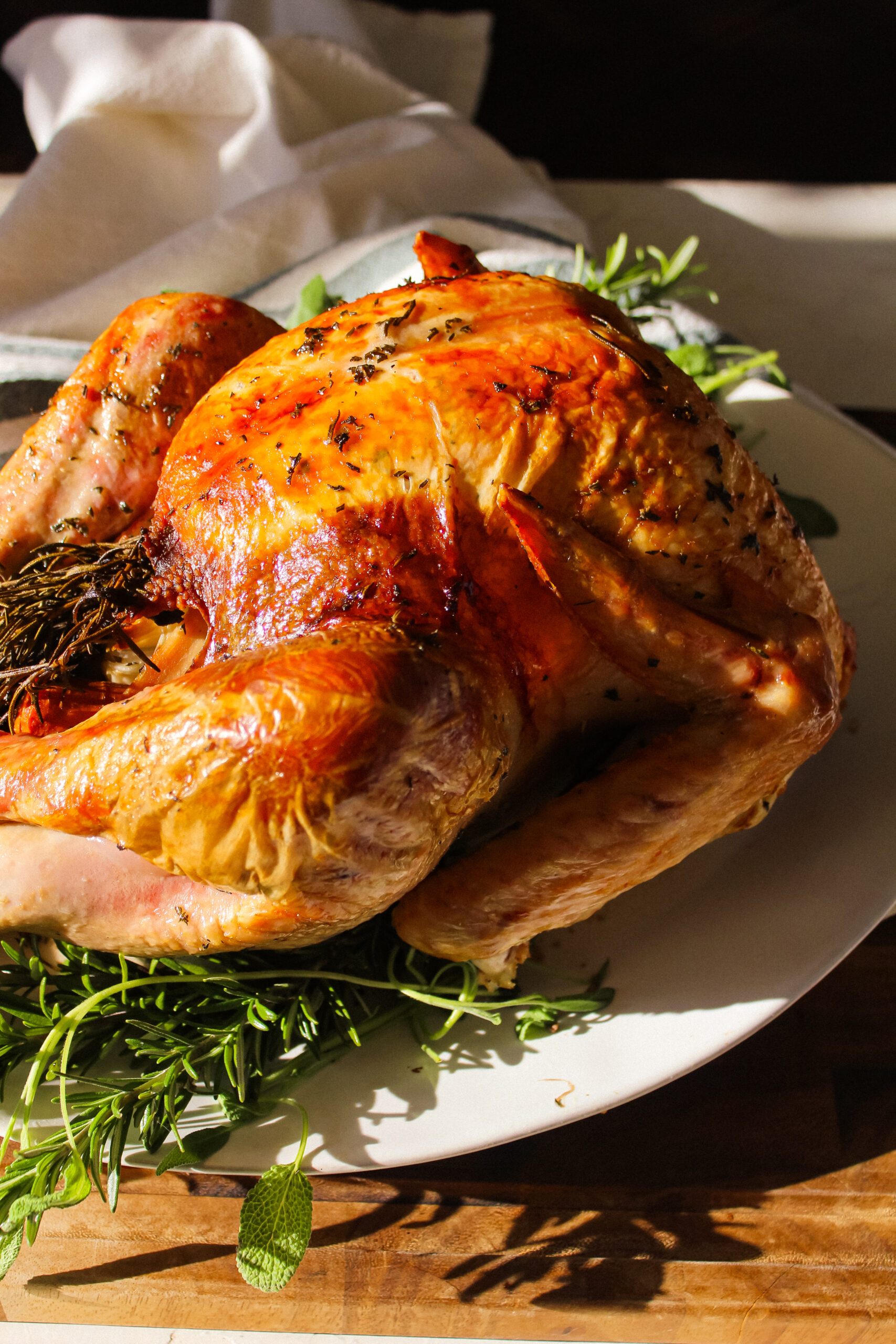
This Brown Bag Turkey might just be the secret to a successful Thanksgiving Turkey! This method has been tested for years in my family. It’s the only way our dad would bake is deliciously tender turkeys every year. And years later, never disappoints! If you haven’t tried this the brown bag method, it’s a game changer!
Coated in lots of herby butter and stuffed with carrots, celery, onion, garlic and lemon for delicious flavor. The turkey is roasted right inside a brown paper bag for the most tender turkey.
The end result is a turkey that is juicy on the inside and crispy golden brown on the outside. Whether it’s your first time hosting thanksgiving or you just want to bake a show stopping bird, this easy method for turkey roasting is the way to go. It’s a simple, stress-free way to make a turkey this Thanksgiving.
Why Brown Bag Turkey Works So Well
- Makes a very juicy turkey. The bag holds in moisture, reducing the amount of moisture that is lost, which results is a super juicy turkey.
- Less stress for you! The bag is used as a self-basting technique, meaning you don’t have to worry about adding extra moisture back into the turkey. The bag does the work for you!
- Clean up will be easier. The entire bird is contained within the bag so no need to worry about scrubbing and scraping the pan afterwards. All that will collect in the bottom to the pan is the juices of the turkey that escape the bag.
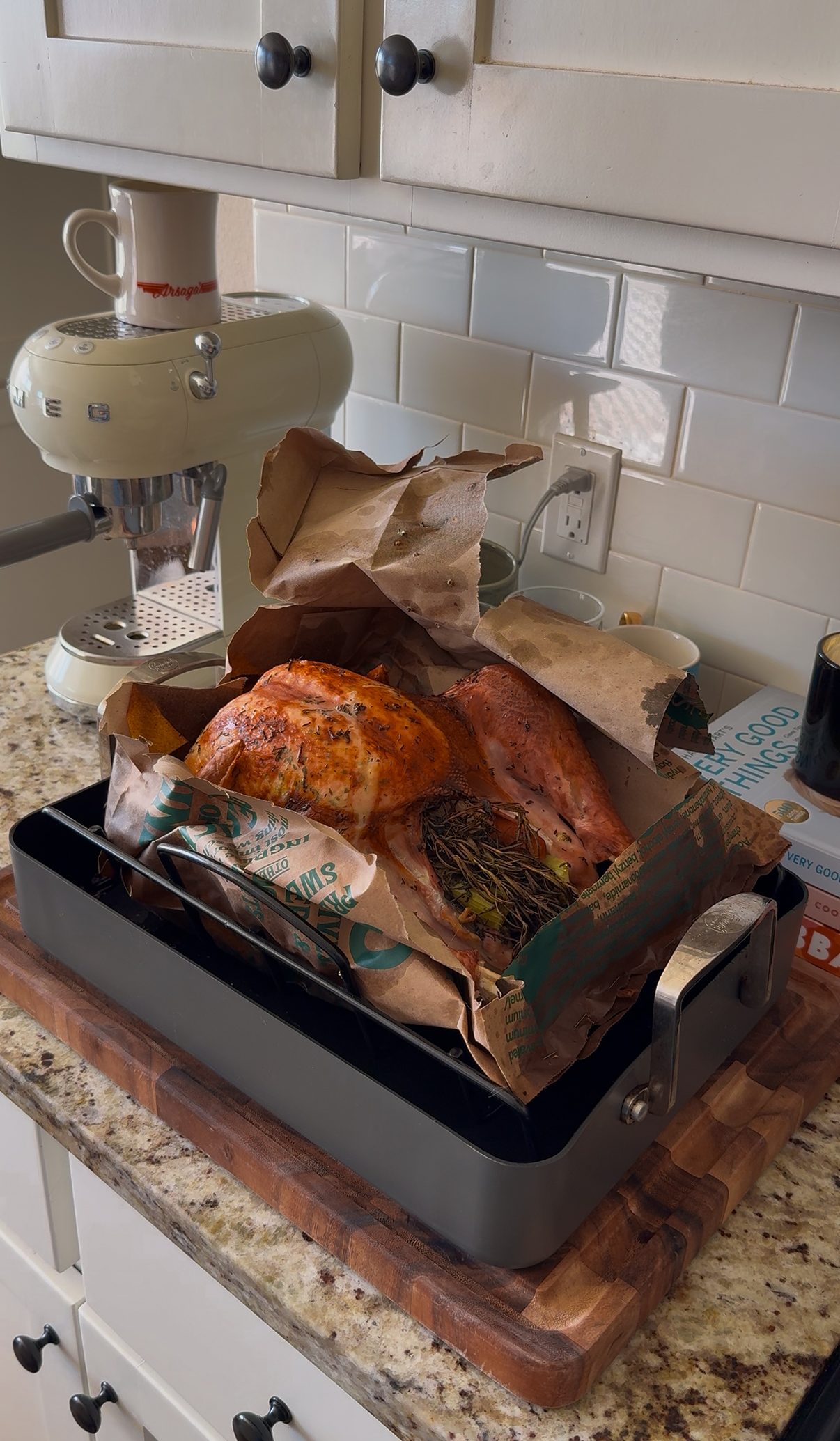
Ingredients You’ll Need for the Best Turkey
For the turkey
- 12-16 lb Turkey
- Carrots
- Onion
- Celery
- Garlic
- Lemons
- Thyme
- Rosemary
- Sage
- Butter
For the turkey gravy
- Butter
- Flour
- Turkey drippings
- Broth
- Thyme
- Salt and pepper
Step-by-Step: How to Make Brown Bag Turkey
Step 1. Prep the Turkey and Veggies
Start by removing the giblets and turkey neck from the inside of the turkey. The giblets will be tucked under the skin at the head of the turkey and the neck will be inside the cavity.
Fill the cavity of the turkey with sliced onion, carrots, celery, garlic, lemon slices and herbs. These are purely to give the turkey flavor while it is roasting and will be discarding after cooking.
Step 2. Butter and Season Generously
In a bowl, whisk together softened butter and herbs. We choose a blend of thyme, rosemary and sage. They give the turkey a delicious herby flavor.
Start by rubbing some butter underneath the outer skin of the turkey. You may have to workout into the space between the skin.
Once you’ve buttered underneath the top layer of turkey sink, coat the outside surfaces of the turkey in herby butter. It will be a thick layer, but trust the process, it will taste delicious in the end!
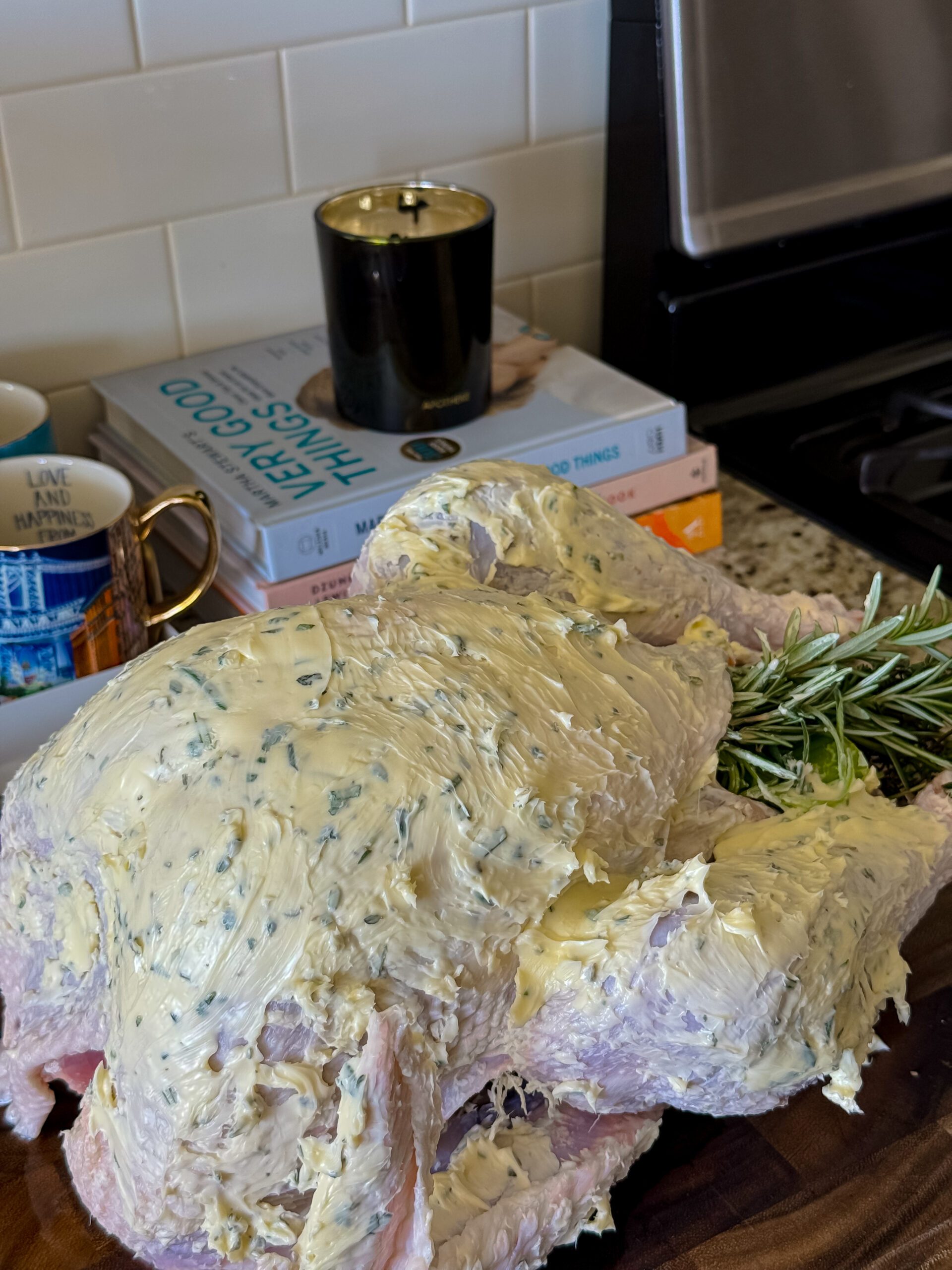
Step 3. Staple shut, sprinkle with water and Roast
Carefully slide your turkey into the brown paper bag and staple the open end shut. Sprinkle the entire bag with water until it is damp.
Place the turkey in the oven on the middle rack and bake for 13-15 minutes per pound. Roasting time may vary depending on the size of your turkey and how your oven cooks. Here’s a general guide:
- 12 lb turkey: ~ 2 hours 30 minutes – 3 hours
- 14 lb turkey: ~ 3 hours – 3 hours 30 minutes
- 16 lb turkey: ~ 3 hours 30 minutes – 4 hours
Use a meat thermometer to check doneness. Shoot for a temperature close to 180ºF.
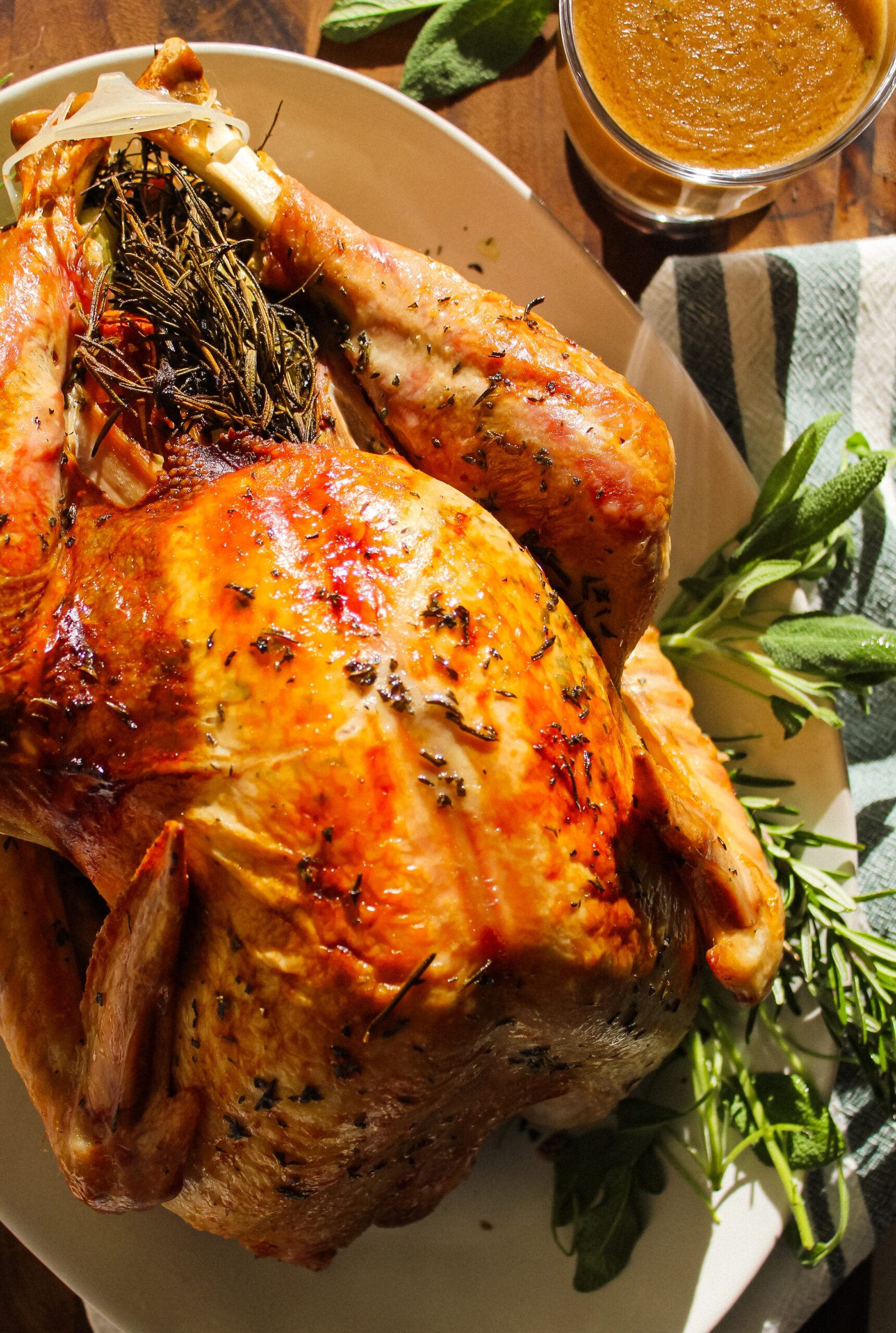
Step 4. Rest, carve and serve with turkey gravy.
After you remove they turkey from the oven, transfer the turkey to a platter to set for 20-30 minutes.
Before you discard anything, save the turkey drippings for turkey gravy. Place a strainer over a bowl and pour the drippings through the strainer to get out any bits.
Carve turkey with a sharp knife, slice, plate and serve with Turkey Gravy! See full details for turkey gravy in recipe below.
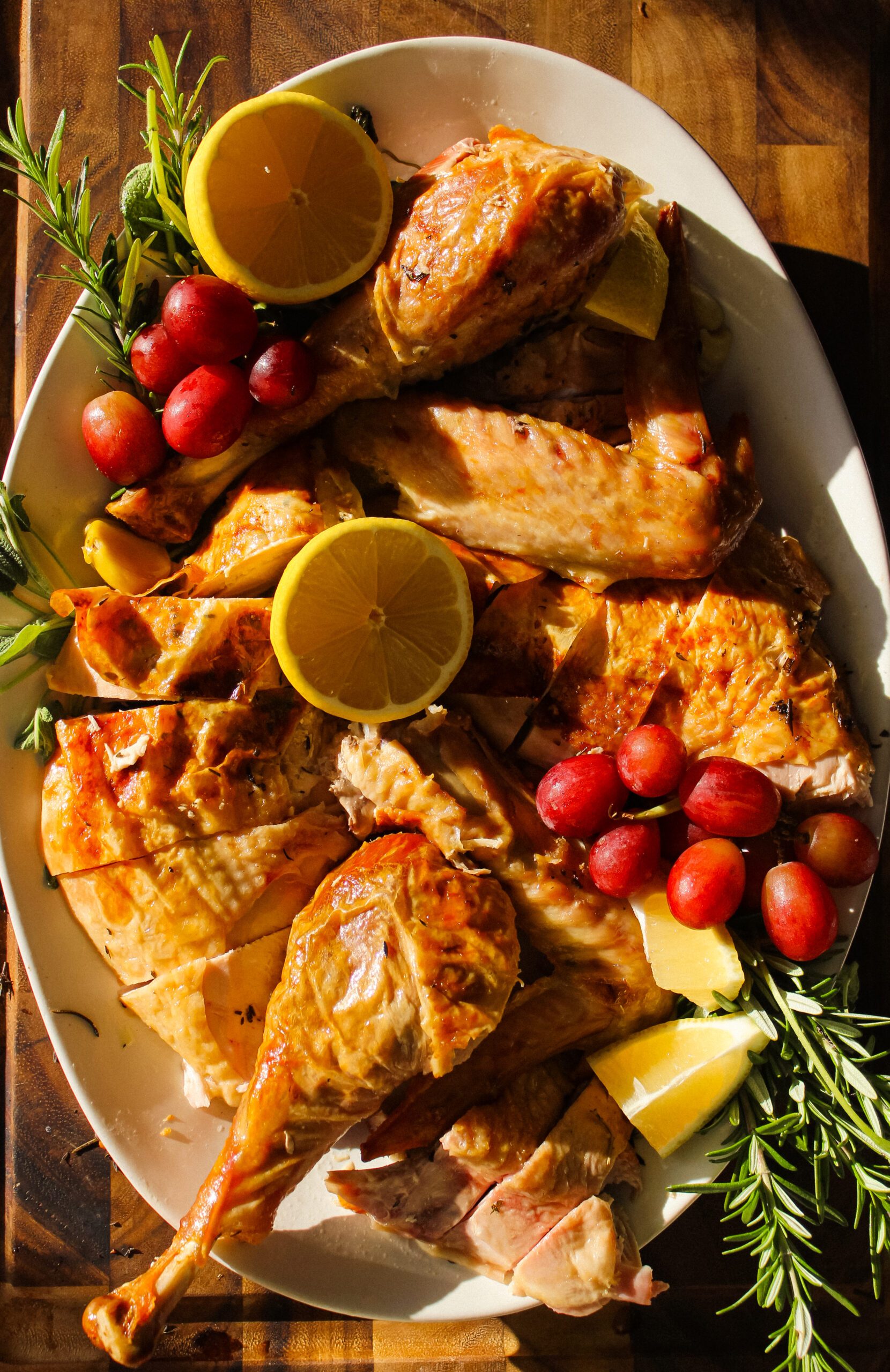
Tips for making a Turkey for Thanksgiving
- Use a plain brown grocery sack. If you can, try to avoid one with extra dyes on packaging.
- Make sure to remove giblets and neck. You can either discard or use them in a gravy.
- Make sure turkey is completely thawed. If the turkey frozen, it could prolong the cooking time, resulting in a drier, tougher turkey.
- Save the turkey drippings for gravy. The best gravy is made with the drippings of the turkey. As the turkey roasts in the oven, it will release some moisture and juices that add so much flavor to gravy. You can use the flavorful drippings to make a turkey gravy for your turkey. See details below on how to make a turkey gravy.
- Let the turkey rest for at least 30 minutes before slicing. Giving the turkey some time to rest secure the juices and flavor.
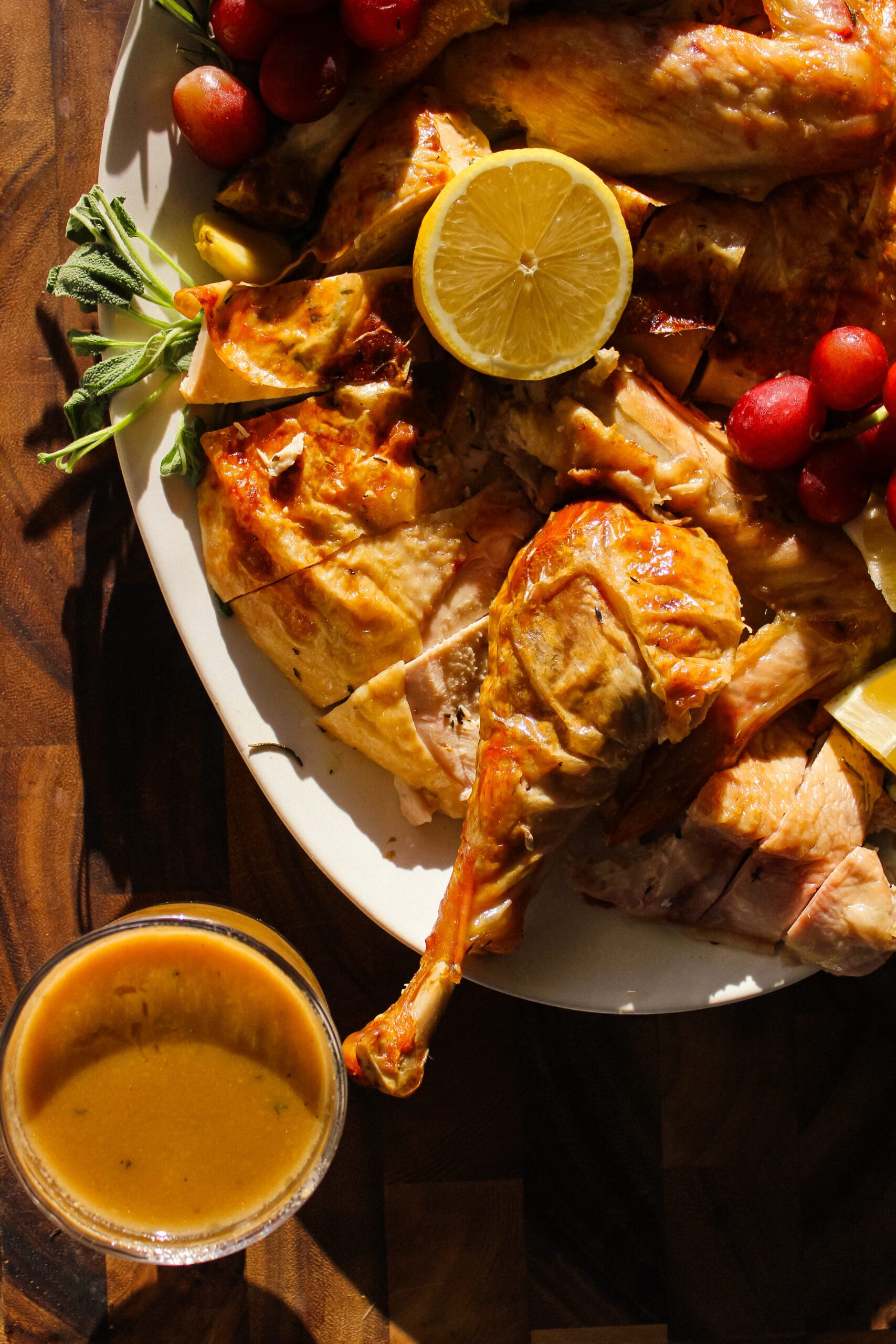
How to thaw a frozen turkey
We recommend thawing the turkey in the fridge. A good rule of thumb to remember is to allow 24 hours for every 4-5 pounds.
- 10-12 lb turkey = 60 hours – 72 hours (2.5 – 3 days)
- 12-14 lb turkey = 72 hours – 84 hours (3 – 3.5 days)
- 14-16 lb turkey = 84 hours – 96 hours (3.5 – 4 days)
It’s important to make sure the inside of the turkey is completely thawed. If the turkey is not completely thawed, cover the turkey in an cold water bath until thawed.
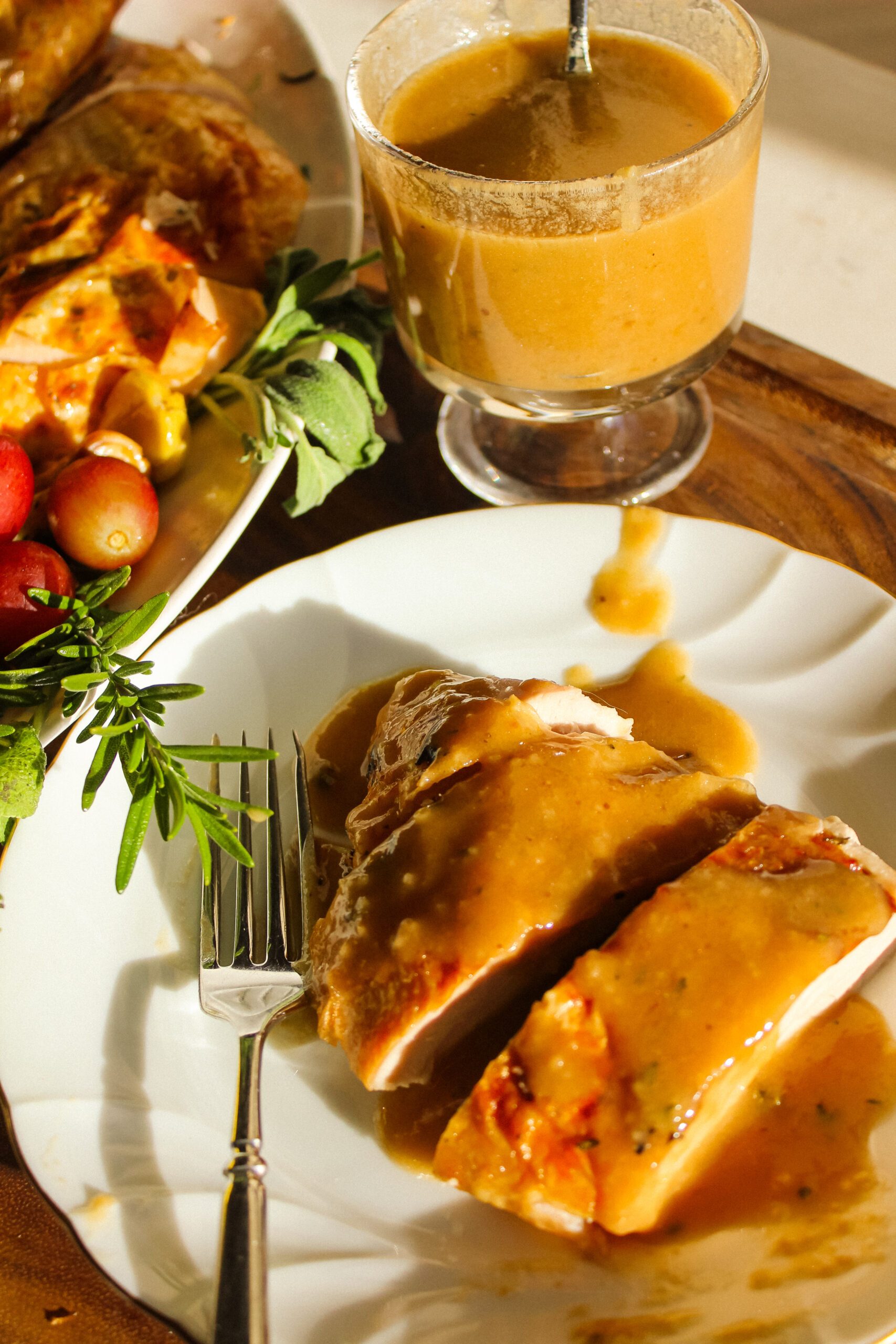
How to know turkey is done cooking
Check doneness with a meat thermometer. Pierce the thermometer through the bag into the turkey.
Make sure the thermometer is in the thickest part of the thigh and not touching bone. Once the internal temperature reaches at least 165ºF, but shoot for a little closer to 180ºF.
How to Serve and Store Your Turkey
If it is your first time carving a turkey, check out this helpful video from New York Times. It will take you step by step through carving, slicing and plating your turkey.
Store any leftover turkey meat in an airtight container in the refrigerator for up to 3-4 days.
Shop Our Kitchen Favorites


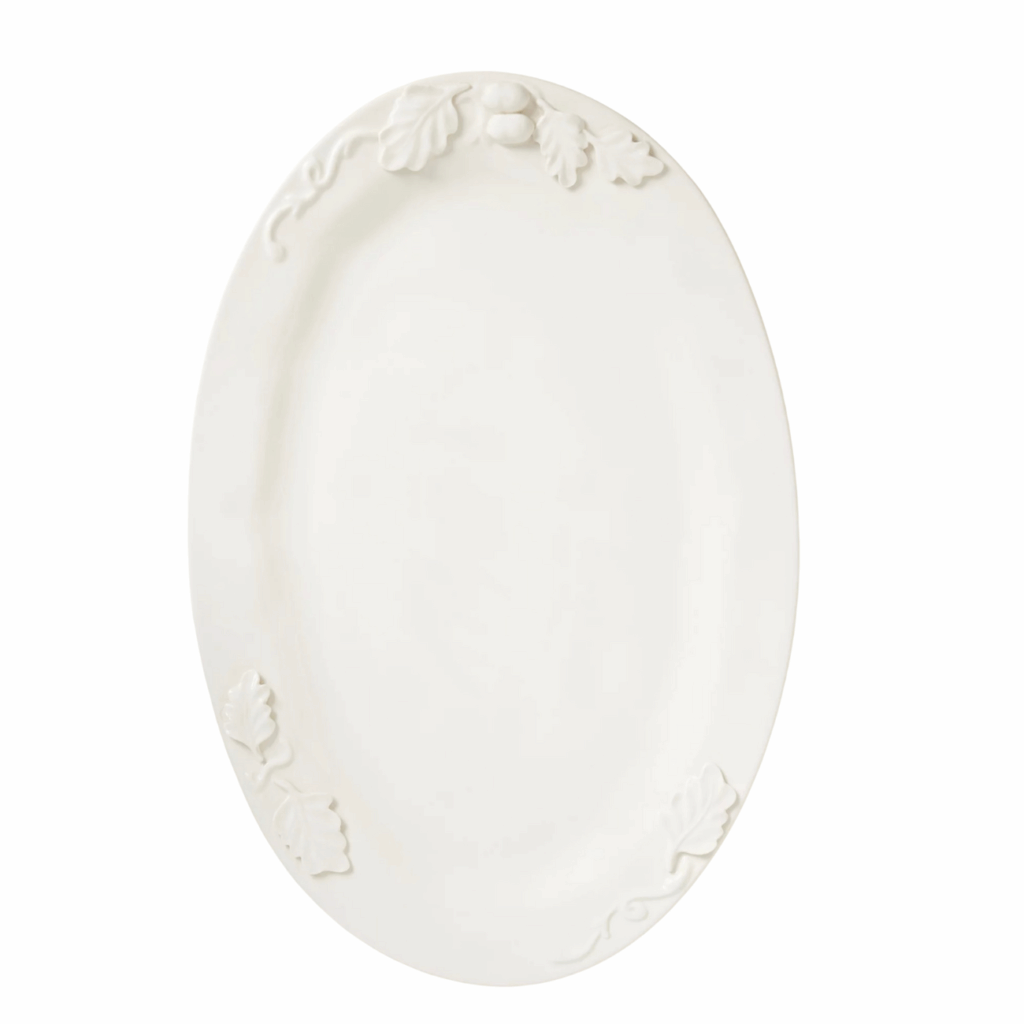
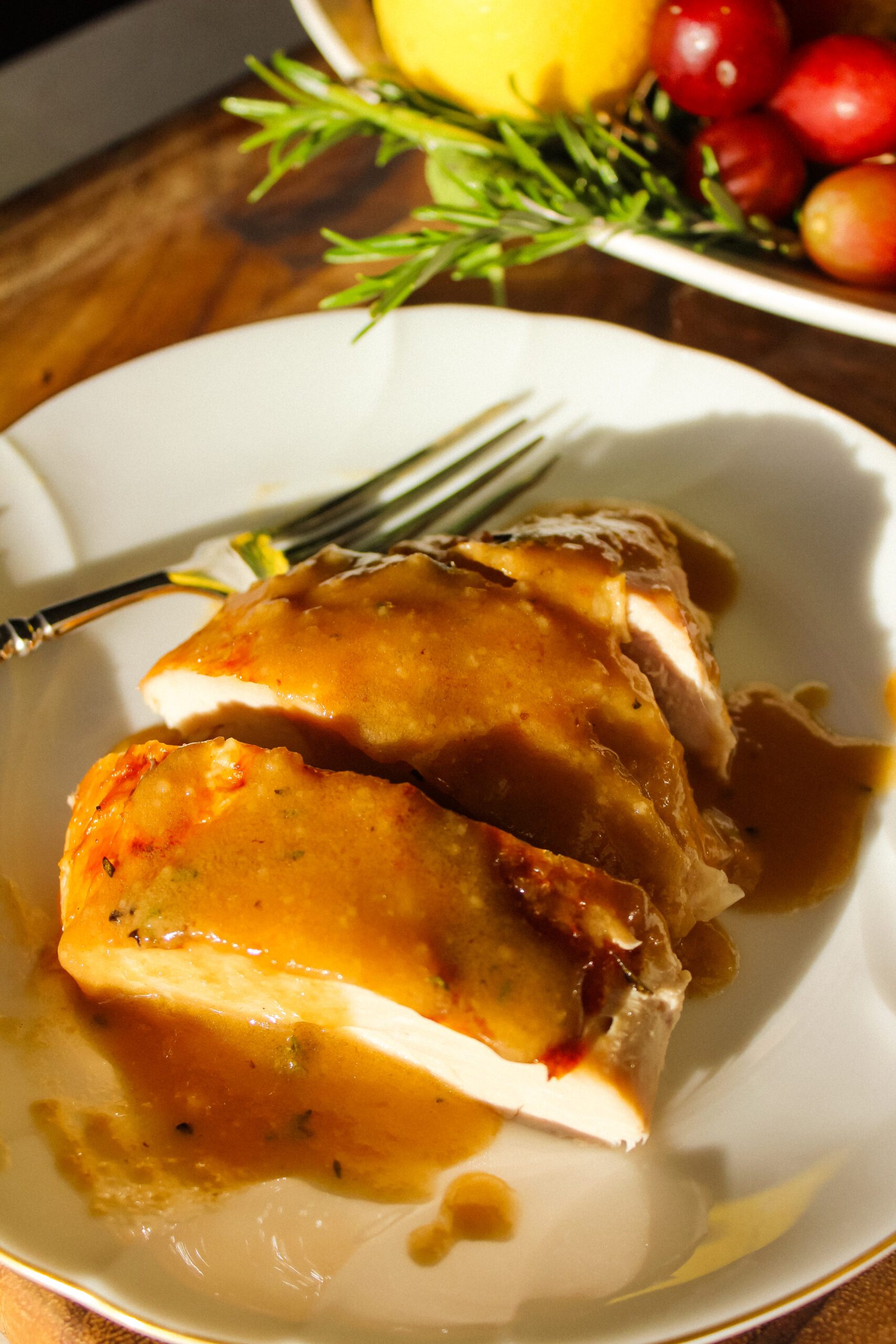
More Thanksgiving Recipes to Try
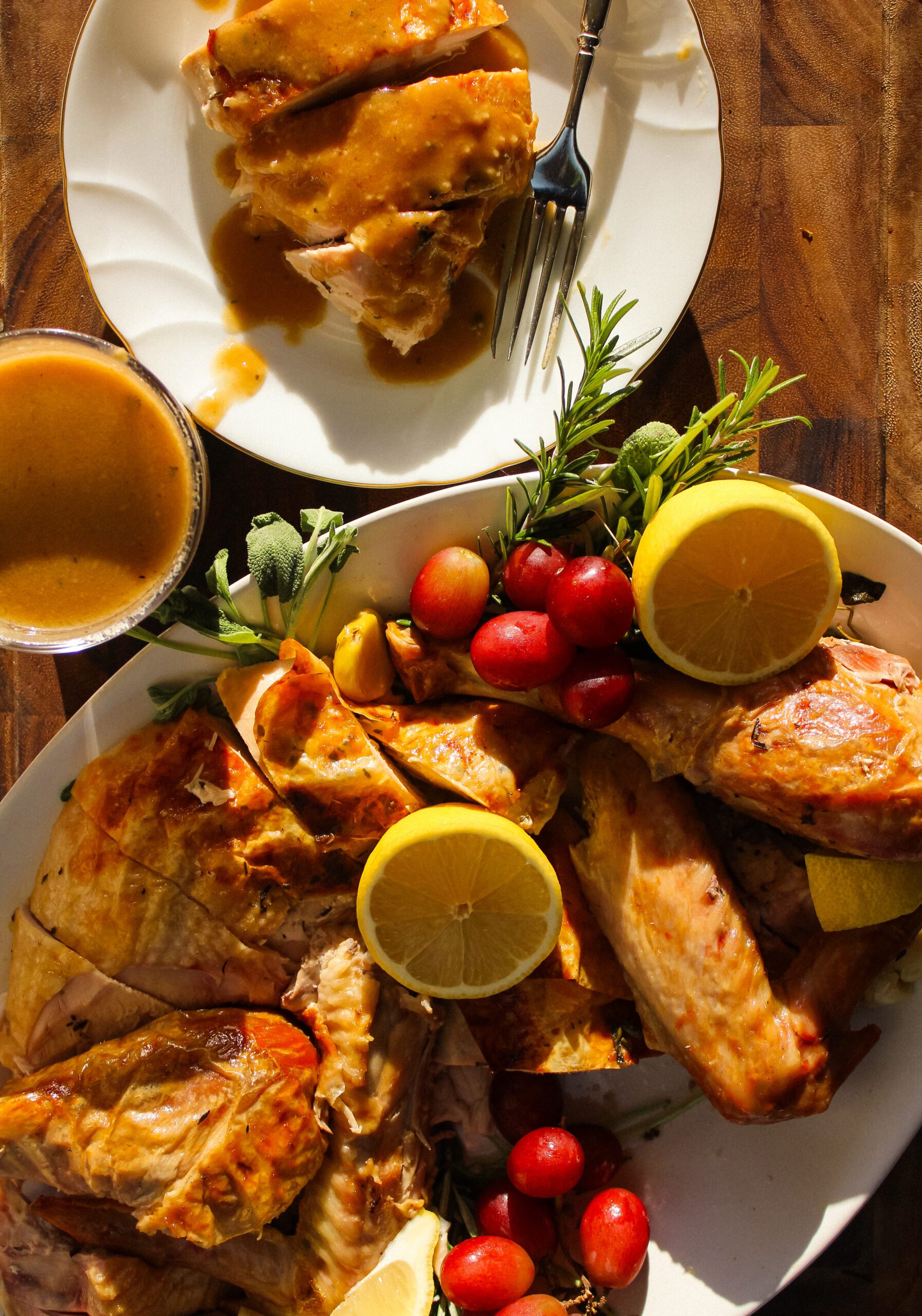
@mozielife Full recipe at mozielife.com (link in bio). The Easiest Turkey Recipe —aka Brown Bag Turkey🧡 1 large brown bag 1 Turkey 3 large carrots, cut in thirds 2 celery stalks, cut in half 1 onion, cut in fourths 4 cloves garlic, roasted 1 lemon, sliced A few sprigs of thyme, rosemary and sage Butter Coat: 1 cup unsalted butter, softened 2 tsp thyme 2 tsp rosemary 5–6 sage leaves chopped Turkey Gravy with Turkey Drippings 2 tbsp butter 1/4 cup butter Pan drippings from a 12-15 lb turkey 2 cups broth (as needed) 1 tsp thyme Salt and pepper to season #turkey #thanksgivingdinner #thanksgivingrecipes #easyrecipes ♬ original sound – noahksticks
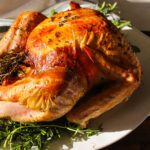
Brown Bag Roasted Thanksgiving Turkey
Description
Learn how to make a juicy and flavorful Brown Bag Turkey! This foolproof recipe uses butter, veggies, and a brown paper bag to create the most tender Thanksgiving turkey ever—crispy on the outside, moist on the inside.
Ingredients
- 1 large brown bag
- 1 Turkey
- 3 large carrots, cut in thirds
- 2 celery stalks, cut in half
- 1 onion, cut in fourths
- 4 cloves garlic, roasted
- 1 lemon, sliced
- A few sprigs of thyme, rosemary and sage
Herby butter to coat
- 1 cup unsalted butter, softened
- 2 tsp thyme
- 2 tsp rosemary
- 5–6 sage leaves chopped
Turkey Gravy with Turkey Drippings
- 2 tbsp butter
- 1/4 cup butter
- Pan drippings from a 12-15 lb turkey
- 2 cups broth (as needed)
- 1 tsp thyme
- Salt and pepper to season
Instructions
- Preheat oven to 375ºF.
- Remove giblets and neck from the inside of the turkey.
- Fill cavity of turkey with onion, carrots, celery, smashed garlic cloves, lemon slices and herbs.
- In a bowl, whip together herby butter. Whisk together unsalted butter and chopped herbs.
- There will be an outer skin on the turkey. Gently lift up the skin and rub about a third of the butter inside the skin. Rub the remaining butter outside the skin.
- Place the turkey in a roasting pan and cover it with a large brown paper bag. Staple the open end of the bag shut.
- Sprinkle the entire bag with water until damp. Place the brown bag turkey in the oven on the middle rack.
- Roast the turkey for 13-15 minutes per pound.
- Check doneness with a meat thermometer. Pierce the thermometer through the bag into the turkey. Make sure the thermometer is in the thickest part of the thigh and not touching bone. Once the internal temperature reaches at least 165ºF, but shoot for a little closer to 180ºF.
- Remove from the oven and transfer the turkey to a platter to set for 20-30 minutes.
- Before you discard anything, save the turkey drippings for turkey gravy. Place a strainer over a bowl and pour the drippings through the strainer to get out any bits.
- In a saucepan, melt butter in the pan. Add flour and whisk until a roux forms. The darker the roux gets, the browner the broth will be.
- Once you’re roux has thickened and browned a bit, gently pour in the drippings into the sauce pan, whisking as you go to make sure no clumps form. Add salt and pepper to season and let the sauce come to a bowl, continuing to whisk. Lower the heat a bit and let the sauce simmer to thicken to your desired consistency.
- Pour in a gravy container for serving.



